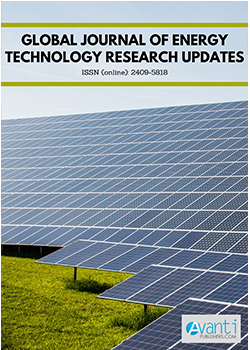Abstract
This paper presents a novel seamless switching technology between different operating conditions of the Unified Power Quality Conditioner (UPQC) with the energy storage system. Frequent start and stop of the series inverter will cause shock and loss under the conventional control method. Moreover, it is a key issue to achieve seamless switching when the UPQC operating condition changes. This paper proposes an improved power angle control (PAC) method to solve these problems. An agile power angle is calculated by this method under stable operating conditions. This feature enables the series inverter to share the load reactive power with the shunt inverter. On the other hand, both the series and shunt inverters are in an easy-to-switch operating state which can help achieve better seamless switching between different operating conditions. Simulation results show the shunt inverter capacity can be reduced up to 47% due to the reactive power sharing by both the inverters which means the reactive power burden of the shunt inverter is great lightened. It is also found that the switching time is about 300μs faster and the maximum voltage fluctuation amplitude is about 90V smaller under improved PAC than the conventional control method.
References
Paramanik S, Sarker K, Chatterjee D, Goswami SK. Smart Grid Power Quality Improvement Using Modified UPQC. Devices for Integrated Circuit (DevIC). 2019; 356-360. https://doi.org/10.1109/DEVIC.2019.8783704
Bhosale SS, Bhosale YN, Chavan UM, Malvekar SA. Power Quality Improvement by Using UPQC: A Review. International Conference on Control, Power, Communication and Computing Technologies (ICCPCCT). 2018; 375-380. https://doi.org/10.1109/ICCPCCT.2018.8574264
Gita K, Kumar A. SSSC Incorporation in Power System Network for Security Analysis. Uttar Pradesh Section International Conference on Electrical, Electronics and Computer Engineering (UPCON). 2020; 1-6. https://doi.org/10.1109/UPCON50219.2020.9376530
Kecojević K, Lukačević O, Ćalasan M, Mujović S. Minimizing active power losses by incorporating Static Var Compensator (SVC) device into the power system. International Conference on Information Technology (IT). 2020; 1-4. https://doi.org/10.1109/IT48810.2020.9070623
Marcu M, Popescu F, Niculescu T, Pana L, Handra AD. Simulation of power active filter using instantaneous reactive power theory. International Conference on Harmonics and Quality of Power (ICHQP). 2014; 581-585. https://doi.org/10.1109/ICHQP.2014.6842783
Fischer GdS, Mengatto A, Kremer LG, Mezaroba M. A Control Strategy for a Series APF With Critical-Load-Bus Voltage Feedback That Avoids Injection Transformer Saturation. IEEE Transactions on Industry Applications. 2019; 55(3): 2290-2299. https://doi.org/10.1109/TIA.2018.2886769
Tu C, Guo Q, Jiang F et al. Dynamic Voltage Restorer With an Improved Strategy to Voltage Sag Compensation and Energy Self-Recovery. CPSS Transactions on Power Electronics and Applications. 2019; 4(3): 219-229, doi:10.24295/ CPSSTPEA.2019.00021 https://doi.org/10.24295/CPSSTPEA.2019.00021
Muneer V, Sukumaran J, Bhattacharya A. Investigation on reduced DC link voltage based UPQC for harmonic compensation under unbalanced load. International Conference on Technological Advancements in Power and Energy. 2017; 1-6. https://doi.org/10.1109/TAPENERGY.2017.8397336
Kimkaew N, Santiprapan P. Performance Comparison of Switching Techniques for Unified Power Quality Conditioner. International Electrical Engineering Congress (iEECON). 2021; 9-12. https://doi.org/10.1109/iEECON51072.2021.9440268
Khadkikar V, Chandra A. A New Control Philosophy for a Unified Power Quality Conditioner (UPQC) to Coordinate Load-Reactive Power Demand Between Shunt and Series Inverters. IEEE Transactions on Power Delivery. 2008; 23(4): 2522-2534. https://doi.org/10.1109/TPWRD.2008.921146
Naidu NKS, Gooi HB, Yi T, et al. Coordinated active power control between shunt and series converters of UPQC for distributed generation applications. Annual Conference of the IEEE Industrial Electronics Society. 2016; 3697-3702. https://doi.org/10.1109/IECON.2016.7793071
Saicharan K, Gupta AR. Allocation of UPQC in Overloaded Mesh Distribution System with Battery Charging Load. IEEE International Conference on Measurement, Instrumentation, Control and Automation (ICMICA). 2020; 1-5. https://doi.org/10.1109/ICMICA48462.2020.9242788
Khadkikar V, Chandra A. UPQC-S: A Novel Concept of Simultaneous Voltage Sag/Swell and Load Reactive Power Compensations Utilizing Series Inverter of UPQC. IEEE Transactions on Power Electronics. 2011; 26(9): 2414-2425, https://doi.org/10.1109/TPEL.2011.2106222
Ye J, Gooi HB, Zhang X, Wang B, Manandhar U. Two-Level Algorithm for UPQC Considering Power Electronic Converters and Transformers. IEEE Applied Power Electronics Conference and Exposition (APEC). 2019; 3461-3467. https://doi.org/10.1109/APEC.2019.8722007
Hasan M, Singh B, Ansari AQ. An approach to minimize the VA size of UPQC-S and its performance comparison. IEEMA Engineer Infinite Conference (eTechNxT). 2018; 1-5. https://doi.org/10.1109/ETECHNXT.2018.8385344
Wanjari RA, Savakhande VB, Chewale MA, Sonawane PR, Khobragade RM. A Review on UPQC for Power Quality Enhancement in Distribution System. International Conference on Current Trends towards Converging Technologies (ICCTCT). 2018: 1-7. https://doi.org/10.1109/ICCTCT.2018.8550918
Karelia N, Sant AV, Pandya V. Comparison of UPQC Topologies for Power Quality Enhancement in Grid Integrated Renewable Energy Sources. IEEE 16th India Council International Conference (INDICON). 2019: 1-4. https://doi.org/10.1109/INDICON47234.2019.9029108
Modesto RA, Silva SAO, Oliveira AA. Three‐phase four‐wire unified power quality conditioner structure with independent grid current control and reduced dc‐bus voltage operating with inverted/dual compensating strategy. International Transactions on Electrical Energy Systems. 2020; 30(6): https://doi.org/10.1002/2050-7038.12380
Vijayasamundiswary S, Baskaran J. A novel approach to nine switch unified power quality conditioner for power quality improvement. International Conference on Innovative Research in Electrical Sciences (IICIRES). 2017; 1-5. https://doi.org/10.1109/IICIRES.2017.8078291
Yadav SK, Patel A, Mathur HD. Comparison of Power Losses for Different Control Strategies of UPQC. IEEE 9th Power India International Conference (PIICON). 2020; 1-6. https://doi.org/10.1109/PIICON49524.2020.9113005
Pal Y, Swarup A, Singh B. Comparison of three control algorithms for single-phase UPQC. International Conference on Energy, Automation and Signal. 2011: 1-5. https://doi.org/10.1109/ICEAS.2011.6147086
Feng X, Zhang Z, Ma W, Zhang L. UPQC coordinated control strategy with circulating active power. International Conference on Information Science, Electronics and Electrical Engineering. 2014; 3: 1825-1829. https://doi.org/10.1109/InfoSEEE.2014.6946237
Feng X, Wei T, Qi Z. Coordinated Control Strategy of power flow in Voltage Quality Conditioner. Power System Technology. 2013; 37(01): 218-223 (in Chinese).

This work is licensed under a Creative Commons Attribution-NonCommercial 4.0 International License.
Copyright (c) 2021 Zhengwei Qu, Zhe Shi, Yunjing Wang, Ahmed Abu-Siada, Baona Wang, Haiyan Dong




